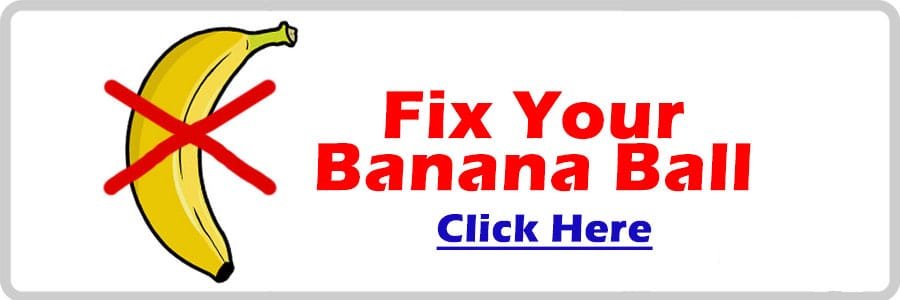Have you ever stood on the golf course, watching your ball veer off to the right, wondering what you did wrong? That frustrating curve, known as a slice, is something many golfers face, but did you know that sometimes adjusting your equipment can help correct it immediately?
Understanding the Slice
Before making any equipment adjustments, it’s essential to understand what a slice is and how it occurs. A slice is typically characterized by a shot that curves wildly to the right (for right-handed players) or to the left (for left-handed players). This is usually due to an open clubface at impact combined with an out-to-in swing path. But don’t worry; you’re not alone in this; many golfers struggle with it.
Equipment Factors Influencing Your Slice
There are several equipment-related factors that can contribute to a slice. Understanding these elements can help you identify what might be causing your issue and lead you to the right adjustments. Let’s break it down:
- Clubs: The type of clubs you use may not be suited for your swing style.
- Loft: The loft of your club can influence ball trajectory and curvature.
- Lie Angle: The angle of the club’s shaft can impact your swing and ball path.
- Grip Size: The size of your grip can affect how you hold the club and how it classes at impact.
- Shaft Flexibility: This affects how your club reacts during your swing, which can influence your ball’s direction.
Analyzing Your Clubs
Before you rush to buy new equipment, take a moment to analyze your current clubs. The right clubs can make a significant difference in how you play and can help correct issues such as a slice.
Choosing the Right Type of Clubs
Different types of clubs are designed for different player levels and styles. If you are using clubs that are not suited for your swing speed or style, this can contribute to a slice. Here are a few types of clubs to consider based on your playing style:
| Club Type | When to Use |
|---|---|
| Game Improvement | Higher loft, wider soles for more forgiveness |
| Players’ | Traditional shape, more control but less forgiveness |
| Distance | Designed for maximum length, may not help with precision |
When choosing clubs, consider your level of play and what feels comfortable. Try out different options to see what best fits your game.
Checking Loft Adjustability
The loft of your clubs plays a crucial role in your game. If your driver or irons have excessive loft, you may end up launching the ball too high, resulting in a slice. Adjusting loft may help you achieve a more neutral ball flight.
Loft Adjustment Table
| Club | Standard Loft | Recommended Adjustment |
|---|---|---|
| Driver | 9°-12° | Lower by 1°-2° |
| 3-Wood | 13°-16° | Lower by 1°-2° |
| Irons | 28°-37° | Check with a pro |
Speak to your club fitter about options that fit your current equipment. A small change in loft could provide immediate improvements.
Lie Angle Considerations
The lie angle of your club should match your height and swing style. If the lie angle is too upright or too flat, it can cause misalignment upon impact, leading to a slice.
How to Check the Lie Angle
To determine if your lie angle is off, consider the following:
- Address the Ball: Take your setup position with the club.
- Observe the Sole: The sole of the club should rest flat on the ground at address. If it is tilted, your lie angle might be incorrect.
Lie Angle Adjustment Guide
| Height | Suggested Lie Angle Adjustment |
|---|---|
| Under 5’4” | 1°-2° flat |
| 5’4”-6’0” | Standard |
| Over 6’0” | 1°-2° upright |
Consult with a professional to find the right fit. A properly adjusted lie angle can lead to straighter shots.
Grip Size Matters
The grip on your club is not just about comfort; it significantly affects your control and shot direction. If your grip is too small, you might be overcompensating, leading to an open clubface and, consequently, a slice.
Testing Grip Size
To find the right grip size, try the following:
- Grip Check: Hold the club naturally and check if you have space for a finger between the fingers and the palm.
- Comfort Test: Swing the club to see if you can maintain control.
Grip Size Table
| Grip Size | Hand Size |
|---|---|
| Standard | Men’s Medium, Women’s Large |
| Midsize | Men’s Large, Women’s Extra-Large |
| Jumbo | Any hand size requiring added cushioning |
Make sure your grips are the appropriate size. This simple adjustment can help ensure you have better control over your shots.
Shaft Flexibility and Its Impact
The flexibility of the shaft can make a considerable difference in your swing. A shaft that is too stiff or too flexible for your swing type may exacerbate your slice.
Understanding Shaft Flex
The shaft flex can generally be categorized into five types:
- L (Ladies): Very flexible.
- A (Amateur): Flexible.
- R (Regular): Moderately flexible.
- S (Stiff): Stiff.
- X (Extra Stiff): Very stiff.
Evaluate your swing speed. If you have a slower swing, consider using a more flexible shaft.
Swing Speed vs. Shaft Flex Table
| Swing Speed (MPH) | Recommended Shaft Flex |
|---|---|
| Under 75 | L or A |
| 75 – 90 | R |
| 90 – 105 | S |
| Over 105 | X |
Seek the advice of a professional fitter to ensure you’re using the correct shaft flex for your game. Adjusting to the right flex can lead to straight, powerful shots.
Using Equipment to Address Swing Path
Even with the right equipment, your swing path can still lead to a slice. However, there are adjustments you can make to your stance and grip to complement your equipment.
Adjust Your Stance
How you position yourself before swinging can make a big difference. A closed stance can help you develop a more in-to-out swing path, reducing the chance of a slice.
- Feet Position: Align your feet slightly to the right of your target (for right-handed players).
- Shoulder Alignment: Aim your shoulders parallel to the target line.
Use a Strong Grip
A strong grip can help keep the clubface from opening at impact. Rotate your hands slightly to the right on the grip if you’re a right-handed golfer.
Grip Type Overview
| Grip Type | Description |
|---|---|
| Neutral | Hands are even on the grip. |
| Strong | Right hand is rotated more right. |
| Weak | Left hand is rotated more left. |
Experiment with grip types during practice rounds to see what offers you the best result.
Seek Professional Help
Equipment adjustments can often require expert assessment. A fitting session with a professional can reveal details about your game that you might not have been aware of.
The Benefits of Professional Fitting
- Personalized Solutions: A professional can identify the right clubs and adjustments tailored to your needs.
- Improves Performance: Correct equipment can lead to immediate improvements in your game.
- Education: You’ll learn about your swing and how to improve.
If your slice is a consistent issue, consider booking a session with a certified club fitter or instructor. They can offer insights that may lead to that immediate fix you’ve been longing for.
Summary
You now have a comprehensive knowledge of the equipment adjustments that can help you fix your slice. From analyzing your clubs and experimenting with loft and lie angle to ensuring you have the right grip and shaft flex, the right equipment can course your game towards improvement.
Quick Recap
- Analyze Your Clubs: Understand what you’re working with first.
- Loft Adjustments: Consider lowering the loft to achieve a better ball path.
- Check Lie Angle: Ensure it aligns with your playing style.
- Grip Size: Ensure your grips are correctly sized for your hands.
- Shaft Flex: Match shaft flex with your swing speed.
- Adjust Stance + Grip: Work on your swing path with better stance and grip techniques.
- Consult a Pro: Consider the benefits of professional fitting to maximize performance.
By understanding how each piece of equipment affects your game and making the necessary adjustments, you’re one step closer to leaving that slice behind. Instead, imagine standing on the tee, confident that your ball will travel straight and true down the fairway. Happy golfing, and here’s to better rounds ahead!







